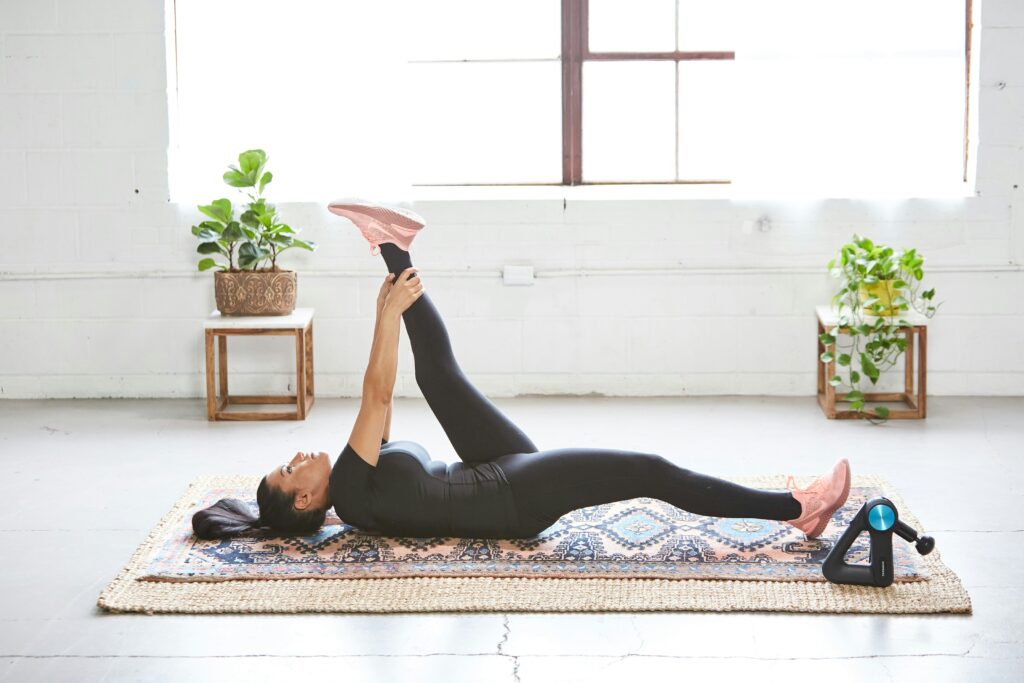Sports Vagina is an informal term used to describe discomfort in the vaginal and vulvar area related to exercise. While not a medically recognized term, it covers a range of common symptoms such as vaginal chafing, dryness, itching, redness, and irritation, often accompanied by a strong vaginal odor.
This discomfort usually results from sweat and friction during physical activity. The combination of sweat and heat in the vaginal area creates an environment where irritation and infections, such as yeast infections or bacterial vaginosis (BV), can thrive.
During menopause, significant hormonal changes lead to alterations in the vaginal microbiota of postmenopausal women. Notably, levels of Lactobacillus decrease after menopause, while hormone replacement therapy may help restore the premenopausal microbiota balance. The role of estrogen in shaping vaginal microbiota highlights its importance, as reduced estrogen disrupts vaginal pH, fostering the growth of pathogens such as Escherichia coli, Candida spp., and Gardnerella spp., which heightens the risk of conditions like bacterial vaginosis (BV) and vulvovaginal candidiasis (VC) (Romeo et al., 2024). This decline in Lactobacillus can also lead to increased microbial diversity and a more alkaline environment, further predisposing women to infections. Additionally, the thinning of vaginal tissues due to reduced estrogen makes them more susceptible to irritation, especially during physical activity, which can intensify symptoms commonly referred to as “sports vagina.”
Understanding the underlying causes
As stated, the primary culprits are often sweat and friction; however, other factors can play a role in causing discomfort. Sweat and friction irritate the skin in the vaginal area, mainly when there is repetitive friction from tight-fitting or non-breathable clothing. For example, workout tights with compression hug you tightly while providing excellent support but can cause vaginal chafing.
While working out, the warm, moist environment can create the perfect conditions for yeast infections. When the Candida fungus overgrows, it causes symptoms like itching, burning, and a thick, white discharge (Romeo et al., 2024).
While the exercise itself does not directly cause BV, workout-related factors like sweat, moisture, and tight, non-breathable clothing can contribute to the disruption of the vaginal flora, increasing the risk of developing BV (Graziottin, A., 2024). Sweating creates a warm, moist environment that promotes bacterial overgrowth, while friction from tight clothing can further irritate the area. Poor post-workout hygiene or the use of harsh, scented products can also disturb the balance of healthy bacteria in the vagina, leading to BV. Changing out of sweaty clothes promptly and maintaining proper hygiene with unscented products can help reduce the risk.
Pre-existing conditions like vestibulodynia (pain at the vulvar opening) and pelvic organ prolapse tend to worsen during physical activity, particularly with high-impact exercises or weightlifting. These issues can make workouts even more uncomfortable.
How to Address Vaginal Chafing
Preventing ‘sports vagina’ is a matter of taking charge of your vaginal health. This involves maintaining proper hygiene, such as showering or cleaning your vaginal area after workouts and changing out sweaty clothes promptly to keep the area dry and reduce infection risks. It also means making smart clothing choices, opting for loose, breathable fabrics and cotton underwear to promote airflow.
When dealing with vaginal chafing from sports, moisturizers or lubricants can make a significant difference. These products adhere to the vaginal walls, drawing in and holding moisture to keep the area well-hydrated. Unlike traditional lubricants used just for sex, these can be part of your daily routine and last longer. They don’t just help with moisture either—they can also balance your vaginal pH, which is crucial in preventing irritation and infections. So, add an excellent lubricant to your workout prep, like Mia Vita® Gel, to prevent chafing. Another benefit of Mia Vita Gel is that it contains hyaluronic acid, which can improve symptoms of vaginal dryness (Alvisi et al., 2019).
Hydration
Staying hydrated is also essential for maintaining a healthy vaginal pH. Avoid harsh products such as scented soaps or douches, and prioritize a balanced lifestyle with proper nutrition, stress management, and sleep to support overall vaginal health.
While vaginal chafing can often be managed with lifestyle adjustments, persistent symptoms like itching, discharge, or odor might point to a more significant issue. If discomfort does not go away, seeking professional guidance is important. Consulting a healthcare professional can provide you with the proper guidance and reassurance about your vaginal health, ensuring you feel supported and confident in your health journey.
Staying active is important, but the irritation associated with ‘sports vagina’ should not be something you suffer through. You can keep discomfort at bay and enjoy your workouts by making simple changes to your routine—like choosing the proper clothing, maintaining good hygiene, and using protective barriers. Always listen to your body; its signals are essential and should always be respected. Do not hesitate to contact your doctor if something does not feel right. Your health is vital, and understanding your body’s needs is crucial to maintaining it.
Sports vagina can be exacerbated during perimenopause and menopause, but women of all ages may experience these symptoms.
References:
- Romeo M, D’Urso F, Ciccarese G, Di Gaudio F, Broccolo F. Exploring Oral and Vaginal Probiotic Solutions for Women’s Health from Puberty to Menopause: A Narrative Review. Microorganisms. 2024; 12(8):1614. https://doi.org/10.3390/microorganisms12081614
- Alvisi S, Gava G, Orsili I, Giacomelli G, Baldassarre M, Seracchioli R, Meriggiola MC. Vaginal Health in Menopausal Women. Medicina (Kaunas). 2019 Sep 20;55(10):615. doi: 10.3390/medicina55100615. PMID: 31547180; PMCID: PMC6843679.
- Graziottin A. Maintaining vulvar, vaginal and perineal health: Clinical considerations. Womens Health (Lond). 2024 Jan-Dec;20:17455057231223716. doi: 10.1177/17455057231223716. PMID: 38396383; PMCID: PMC10894559.
